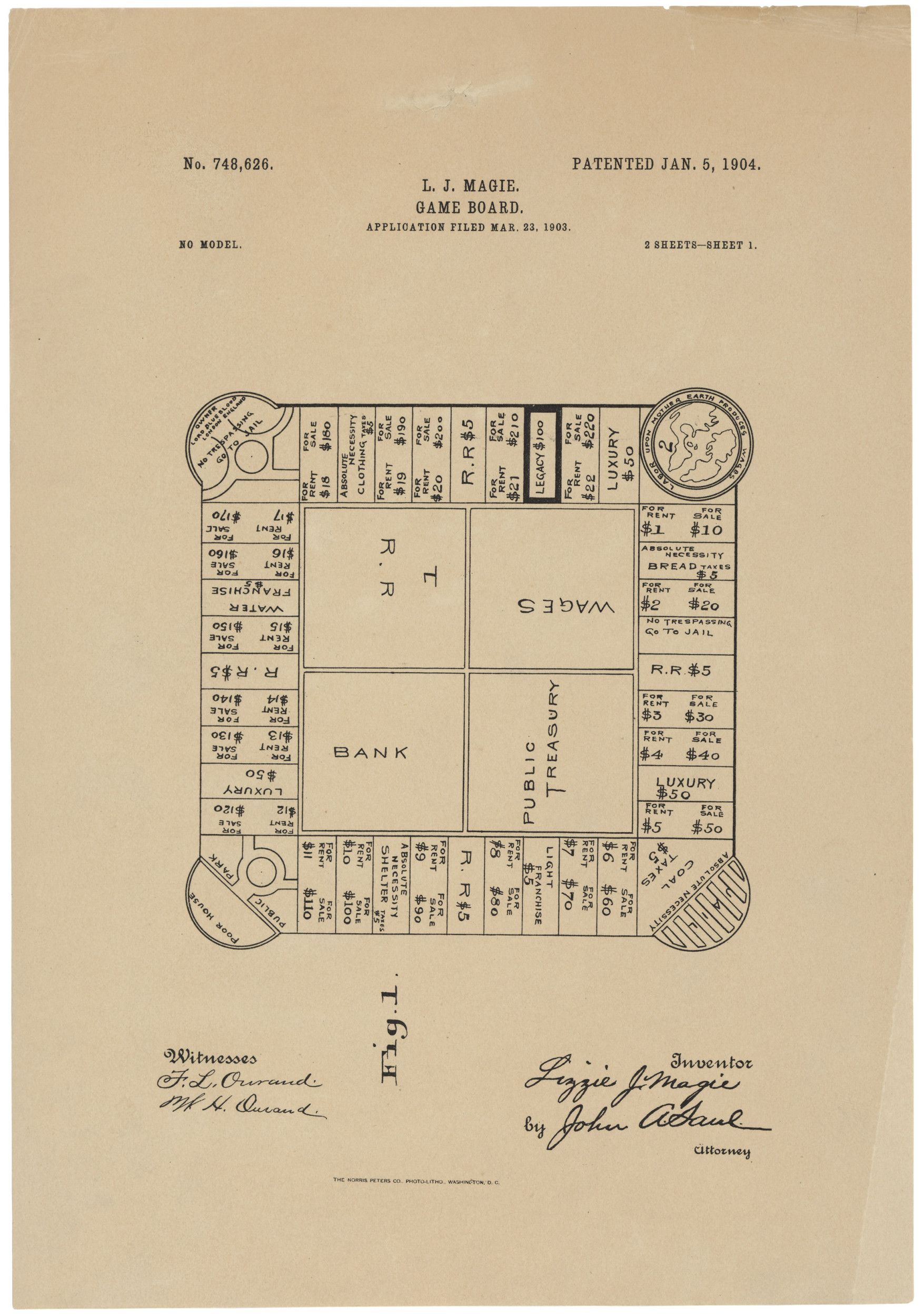What is Patent Number 748,626?
Focusing on Details: White Out/Black Out
All documents and text associated with this activity are printed below, followed by a worksheet for student responses.Introduction
You will see a patent drawing for an invention with its name and/or other details hidden.Quickly scan this document. What do you notice first?
Name:
Class:
Class:
Worksheet
What is Patent Number 748,626?
Focusing on Details: White Out/Black Out
Examine the documents included in this activity and write your response in the space provided.
- Describe the document and the invention it depicts as if you were explaining it to someone who can’t see it.
- Based on what you can see, what do you think is the purpose of this invention? List evidence from the document to explain your opinion.
After you have made a hypothesis, click "View Entire Document" to reveal the invention.
Your Response
1
Activity Element
Drawing for a Game Board
Page 1

Conclusion
What is Patent Number 748,626?
Focusing on Details: White Out/Black Out
- What positive effects has this invention had?
- What negative effects has this invention had?
Your Response
Document
Drawing for a Game Board
1/5/1904
Lizzie J. Magie, of Brentwood, Maryland, submitted this drawing of her improvement of game-boards in 1904. The object of the game was to amass a much wealth and money as possible. The game was designed to illustrate the principle of a single-tax idea being proposed for use in the United States. Monopoly, patented in 1935, was based on this game.
This primary source comes from the Records of the Patent and Trademark Office.
National Archives Identifier: 595519
Full Citation: Drawing for a Game Board; 1/5/1904; Records of the Patent and Trademark Office, . [Online Version, https://docsteach.org/documents/document/drawing-game-board, May 2, 2024]Drawing for a Game Board
Page 1

